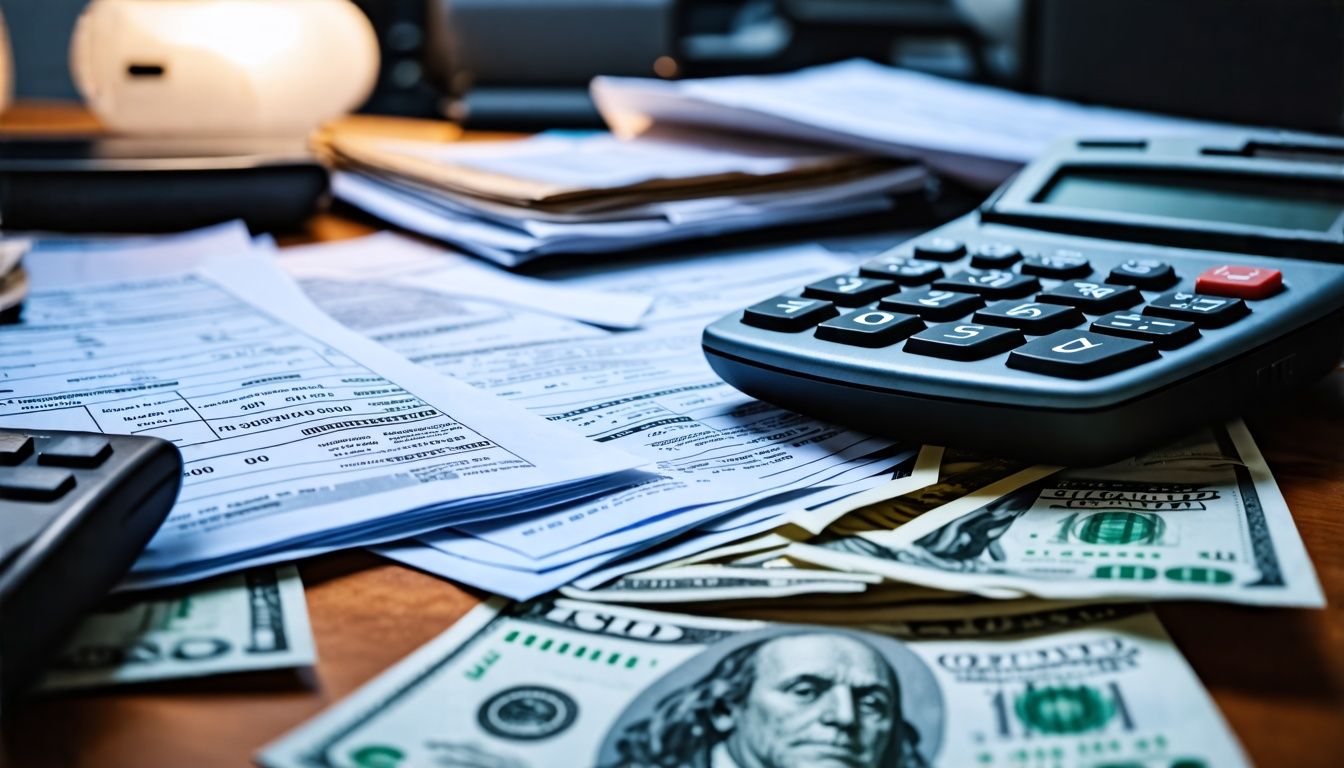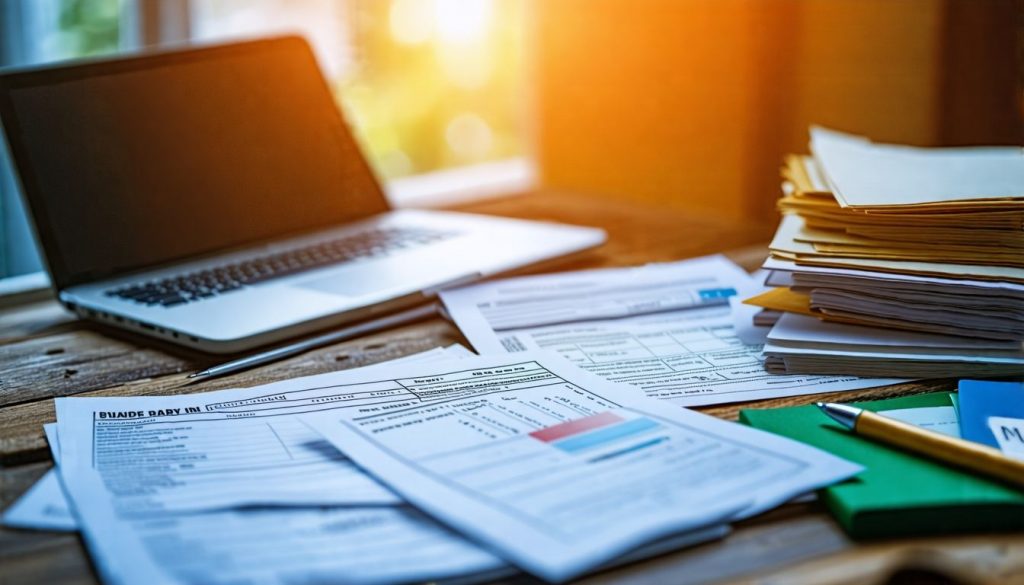Many Canadians find themselves struggling to manage their debt. A critical piece of information is that there are Canadian emergency debt relief programs available. This article will guide you through assessing your situation, exploring debt relief options, and finding the right strategy for management and repayment.
Stay informed on how to navigate your financial challenges successfully.
Key Takeaways
- Canadians can manage their debt by assessing what they owe, creating a list of debts including the total amount, interest rates, due dates, and minimum payments required. This step helps in finding the right Canadian emergency debt relief programs.
- Choosing a debt repayment strategy involves setting clear goals, deciding on which debts to prioritize like high-interest or essential payments first, and making a plan for paying back family or friends to maintain positive relationships during financial difficulties.
- Exploring debt relief options provides opportunities to negotiate with creditors for flexible payment plans or lower interest rates. Considering consolidated loans can simplify repayments by merging multiple debts into one with potentially lower costs.
- To avoid accruing more debt, individuals should create and adhere to a budget, limit unnecessary expenses like shopping trips or subscriptions, think carefully about major purchases, build an emergency fund for unexpected events and stay educated on available assistance programs.
- Finding help through resources such as non-profit credit counseling services, government initiatives like the Canadian Emergency Debt Relief Program, and using agencies like Debt.ca can offer guidance on managing finances effectively during economic hardships.
Assessing Your Debt Situation
To understand your financial standing, start by identifying all your debts. Next, examine your budget and recent income to get a clearer picture of what you can manage.
Make a list of your debts
Assessing your debt situation is a vital step in managing financial strain. Creating a list of your debts helps clarify what you owe and aids in developing effective Canadian debt relief programs.
- Identify all creditors: Write down the names of everyone to whom you owe money. This includes banks, credit card companies, and personal loans from friends or family. Knowing who your creditors are allows you to communicate effectively about your debts.
- Record the total amount owed: Next to each creditor, note how much you owe them. This gives you a clear picture of your overall financial obligations, which is essential for proper debt management in Canada.
- Include interest rates: Document the interest rates associated with each debt. High-interest debts can accumulate rapidly, making them a priority for repayment strategies.
- List payment due dates: Write down when each payment is due. Keeping track of deadlines can help avoid late fees and missed payments, which worsen your financial hardship.
- Note minimum payments required: Include the minimum monthly payment amount for each debt. Understanding these figures enables you to budget accordingly and explore consolidation loans in Canada if necessary.
- Categorize types of debt: Separate secured debts (like a mortgage) from unsecured debts (like credit cards). This distinction can impact your approach to repayment or potential settlement options.
- Consider any overdue payments: Mark any accounts that are past due or in collections. Acknowledging these situations can guide you toward specific relief options available through agencies like Debt.ca.
- Evaluate personal loans from family and friends: If applicable, include informal loans as well. Communicating openly about repayments with loved ones may prevent misunderstandings and strengthen relationships during this stressful time.
Creating this comprehensive list puts you on the right path toward financial relief options that best suit your needs and circumstances while maximizing government assistance opportunities available for Canadians facing economic challenges.
Review your budget
Reviewing your budget is a crucial step in understanding your financial situation. Create a detailed overview of your income and expenses. This will help identify areas where you can cut back.
Track fixed costs like rent, utilities, and other essentials first. Then assess variable expenses such as entertainment or dining out. By knowing exactly where your money goes each month, you can make informed decisions about debt repayment.
After evaluating your budget, explore strategies for choosing an effective debt repayment approach tailored to your needs.
File your taxes
Filing your taxes is crucial for understanding your financial situation. It helps clarify any potential refunds or debts owed to the government. Canadians must submit their tax returns by April 30 each year, ensuring they are accurately reported and include all income sources.
This process can uncover important information about eligibility for various government assistance programs related to debt relief.
Timely filing also positions you better when seeking financial support during economic hardships. It strengthens your case with creditors and may open doors to additional resources like credit counseling in Canada or debt forgiveness options in Canada.
Assessing these elements will provide clarity as you move on to choosing a debt repayment strategy.
Choosing a Debt Repayment Strategy
Choosing a debt repayment strategy requires careful thought. You need to set clear goals and prioritize which debts to address first for the best results.
Consider a timeframe
Establishing a timeframe is vital for effective debt management strategies. Aim to set realistic deadlines for paying off each type of debt. Short-term goals can focus on high-interest debts, while long-range objectives might address larger loans or consolidated debt options.
This structured timeline helps maintain accountability and encourages more disciplined financial habits.
Review your progress regularly to ensure you’re on track with your Canadian Emergency Debt Relief Program goals. Adjust timelines as needed based on any changes in your financial situation.
By clearly defining when each debt should be paid off, you make it easier to handle financial hardship relief and stay committed to achieving overall stability through government relief programs and other assistance options available for Canadians.
Decide on which debts to prioritize
Determining which debts to tackle first can significantly impact your financial recovery. Prioritizing effectively allows you to focus your efforts and resources, increasing the chances of successful repayment.
- High-Interest Debts
Focus on debts with the highest interest rates first. Credit cards often fall into this category. Paying them down quickly saves money in the long run and reduces overall debt faster.
- Essential Payments
Prioritize mandatory payments like rent or mortgage and utility bills. Missing these can lead to severe consequences, such as losing your home or having services cut off. Keeping up with these obligations is crucial for stability.
- Secured Debts
Pay attention to secured debts, such as car loans or mortgages. These loans are backed by collateral, meaning failure to pay could result in repossession or foreclosure. Ensuring these debts are managed effectively is vital for maintaining ownership of important assets.
- Family and Friends
Consider personal loans from family or friends next. While not regulated like bank loans, these relationships can be strained by unpaid debts. Open communication about repayment plans reinforces trust and helps maintain healthy relationships.
- Medical Bills
Medical debt can feel overwhelming but often has more flexible payment options compared to other creditors. Contact healthcare providers to discuss potential repayment plans without incurring late fees or additional interest charges.
- Unsecured Loans
Finally, focus on unsecured loans that carry lower priority compared to previous categories. These may include personal loans from banks with varying terms and interest rates—often easier to negotiate payment terms due to their lack of collateral risk.
Choosing which debts to prioritize plays a significant role in easing financial stress during challenging times, especially within tools like the Canadian Emergency Debt Relief Program for support in tough situations.
Making a plan to pay back family or friends
After deciding which debts to prioritize, consider how to repay any loans from family or friends. Open communication is essential. Discuss your current financial situation and outline a feasible repayment plan.
Set realistic timelines that accommodate both parties’ needs.
Creating a written agreement can help ensure clarity on payment amounts and dates. This approach fosters trust while preventing misunderstandings in the future. Take these steps seriously, as maintaining personal relationships during financial hardship is vital for long-term support and stability.
Utilizing available resources like Canadian government assistance for debt can also ease repayment pressures.
Exploring Debt Relief Options
Exploring debt relief options can open new doors for financial recovery. You may choose to negotiate with creditors or look into debt consolidation loans. Each option offers unique benefits that can ease your burden.
Take the time to research and understand what fits your situation best. Discovering the right path could lead you toward a more secure financial future. Read on to find out how these strategies might work for you.
Working with creditors and financial institutions
Establishing communication with creditors and financial institutions is essential for Canadians facing debt challenges. Start by reaching out to them directly. Explain your situation honestly; they may offer flexible repayment plans or lower interest rates.
Many organizations prefer working with borrowers who are proactive rather than waiting until accounts become overdue.
Consider proposing a new payment schedule that fits your current budget. Some creditors provide options such as temporary forbearance or adjustments in monthly payments, which can significantly ease financial stress.
Engaging a debt relief agency like Debt.ca can also be beneficial, as they specialize in negotiating terms on behalf of consumers seeking effective debt settlement options and government-legislated debt relief in Canada.
Closing accounts on paid off debts
Closing accounts on paid-off debts can positively impact your credit score. Once you’ve settled a debt, confirm that the creditor reports it to credit bureaus as paid. This step helps document your journey toward becoming debt-free.
Consider closing these accounts if they carry high annual fees or the potential for overspending.
However, retaining some old accounts may benefit your credit history. Longer account histories reflect responsible financial behavior and boost your overall credit rating. Weigh the pros and cons of each closed account before taking action.
The Canadian Emergency Debt Relief Program offers avenues for individuals seeking more financial assistance amidst their journey to reduce debt effectively.
Considering a consolidated loan
A consolidated loan can be a smart choice for Canadians looking to simplify their debt repayment. This type of loan combines multiple debts into a single payment, often with a lower interest rate.
It provides clarity and ease in managing finances, rather than juggling various payments each month.
Many financial institutions offer different options for this kind of consolidation. By merging debts, Canadians may qualify for reduced monthly payments and potentially lower overall costs.
Exploring such avenues can provide significant relief under government legislated debt relief initiatives designed to assist citizens facing economic challenges.
Avoiding Taking on More Debt
To avoid taking on more debt, create a budget and stick to it. Identify your spending habits and limit unnecessary expenses to stay financially healthy.
Tips to avoid accruing more debt
Managing your finances wisely can help you avoid accumulating more debt. Simple strategies can change your spending habits and lead to improved financial health.
- Create a Tight Budget: Track all income and expenses. Allocate specific amounts for essentials like rent, groceries, and utilities. This will leave less room for unnecessary purchases.
- Use Cash Instead of Credit: Paying with cash helps control spending better than credit cards. Set aside cash for daily expenses to prevent overspending.
- Limit Shopping Trips: Cut down on visits to malls or online shopping sites. Fewer trips mean fewer temptations to buy things you don’t need.
- Avoid Impulse Purchases: Always think before buying an item that isn’t essential. Give yourself at least 24 hours to decide if it’s a necessary purchase.
- Stop Subscribing Unnecessarily: Evaluate any subscriptions you have, like streaming services or magazines. Cancel those you rarely use to save money each month.
- Set Financial Goals: Outline short-term and long-term financial objectives, such as saving for a vacation or retirement. Having goals motivates you to control spending habits.
- Stay Educated About Debt Relief Options: Learn about programs like the Canadian Emergency Debt Relief Program that offer support during tough times without taking on new debt.
- Seek Help with Your Finances: Talk to family, friends, or professionals when struggling with financial decisions or feeling overwhelmed by debt management options.
- Plan Major Purchases Wisely: For significant expenses, such as appliances or vehicles, make sure they fit within your budget first; saving up allows for better choices without incurring debt.
- Build an Emergency Fund: Aim to set aside three to six months’ worth of living expenses in case of unexpected events or emergencies; this reduces reliance on loans during tough times.
Using these tips will build a stronger foundation for avoiding additional debt while enhancing your financial well-being amidst available support options like government legislated aid programs in Canada.
Knowing where to get help
Finding help can be crucial in managing debt. Canadians can reach out to various resources for support. Many organizations offer free consultations, including non-profit credit counseling services and community agencies.
These debt relief agencies in Canada provide guidance on financial options available to you. They can assist with budgeting and navigating emergency financial assistance programs.
Government initiatives also play a key role. The Canadian Emergency Debt Relief Program offers structured support for those struggling financially due to unforeseen circumstances. Exploring these relief programs for Canadian citizens may lead you toward effective solutions tailored to your needs.
Knowing where to seek assistance is vital before moving forward with debt repayment strategies.
Using a debt relief agency like Debt.ca
Using a debt relief agency like Debt.ca offers Canadians valuable resources for managing financial stress. These agencies provide expert guidance on navigating government-legislated debt relief in Canada and tailored strategies to reduce debt effectively.
They can assist individuals with multiple creditors, negotiating terms that may lead to lower monthly payments or reduced overall balances.
Debt.ca specializes in connecting clients with financial support options suited to their unique situations. Their services include advice on Canadian emergency business support programs and loan options available through various institutions.
Utilizing a debt relief agency can simplify the process, giving you access to essential tools for managing your finances amidst economic challenges.
Conclusion
The Canadian Emergency Debt Relief Program offers vital support to those facing financial challenges. This guide equips Canadians with practical strategies and resources for effective debt management.
Taking informed steps can lead to a clearer path toward financial recovery. Seek professional advice if needed, and remember that relief options are available to help you regain control of your finances.
FAQs
1. What is the Canadian Emergency Debt Relief Program?
The Canadian Emergency Debt Relief Program is a government-legislated initiative in Canada designed to provide financial support for Canadians dealing with debt.
2. How does the program help Canadians?
This relief program offers emergency fund resources and employs debt reduction strategies as part of economic aid, helping Canadians manage their finances better during challenging times.
3. Who can apply for this program?
Any Canadian citizen facing significant financial hardship can apply to benefit from these Canadian relief initiatives that aim at providing substantial economic aid.
4. Where can I find more information about this program?
You can find a comprehensive guide on the Canadian Emergency Debt Relief Program online, which provides detailed information on eligibility criteria, application process and benefits of the initiative.









